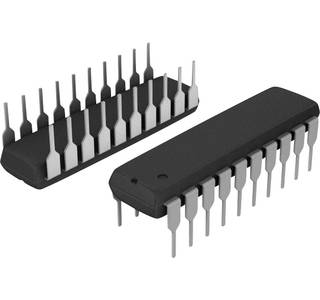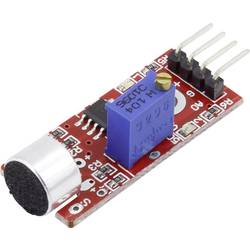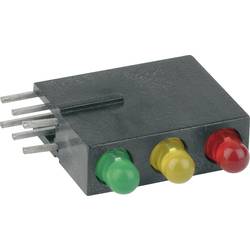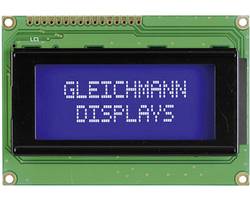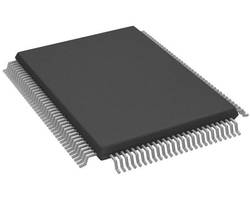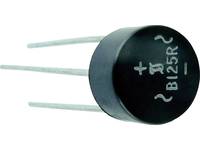All products
Guide
This text is machine translated.
Things to know about active components
Whether LED, rectifier, relay or Peltier element - active components are the backbone of electrical engineering. In our guide, we provide you with a brief overview of which active components are available and for which applications they are suitable.
-
Difference between active and passive components
-
Active components at a glance
-
Our practical tip: Don't skimp on tools
-
FAQ - frequently asked questions about active components
Difference between active and passive components
In electronics, a component is the smallest part of a circuit that cannot be disassembled further without losing its function. This could be, for example, an LED, a capacitor or other. Basically, a distinction is made between active and passive components: An active component enables the control or amplification of a signal.
Passive components, on the other hand, behave passively and can neither amplify nor control a signal. The group of passive electrical components includes, for example, resistors, capacitors, coils and chokes. In addition to a variety of active and passive components, the range in our online store also includes the appropriate accessories.
Active components at a glance
In electronics, there are a variety of active components, with sensors being a large group. A sensor is a component that can convert a physical quantity or a chemical effect into an electrical signal. These practical detectors have long since conquered our everyday lives. They can be found in cars, where they warn by means of ultrasound if the distance to another vehicle or other obstacle is undercut when parking.
Radar sensors are now also installed in many modern cars and are an important component on the road to autonomous mobility. Your smartphone is also lavishly equipped with sensors: A proximity sensor, for example, ensures that the display is switched off when you hold the device to your ear while making a call. A temperature sensor monitors the temperature in your refrigerator, while a motion sensor automatically switches on the outdoor lighting when you get home in the evening. Sensors are also important in the industrial sector. They measure temperatures, monitor fill levels and detect gas or chemicals in the air.
Semiconductor components consist of a material that conducts electricity only under very specific physical and electrical conditions. Microcontrollers and processors are probably the best-known components in this field. They control heating and air conditioning systems and perform calculations in computers and calculators. Without microcontrollers and processors, neither televisions, telephones, computers, cars nor supermarket checkouts would function in our technical world.
In electronics, however, there are other semiconductor components that provide valuable services, for example in the power supply: Modern semiconductor rectifiers, for example, act as converters to convert alternating voltage into direct voltage, with rectification usually being realized by semiconductor diodes.
Voltage regulators compensate for fluctuations in the input voltage and also stabilize the voltage. Transistors should not remain unmentioned. In simple terms, a transistor is an electrical switch that can switch and amplify signals. Without these small semiconductor components, electronic circuits in the field of microelectronics would not be possible at all.
The word optoelectronics, or optronics, is a combination of the terms optics and semiconductor electronics. It refers to all electronic components that convert electrical energy into light (or vice versa). Optoelectronic components are divided into transmitters (actuators) and receivers (detectors). Today, it is impossible to imagine industry and the private sector without optronics, which encompasses a wide range of active components, from LED control and laser technology to fiber optics.
Display technology in particular plays an important role in our advanced knowledge and information society. Today, hardly any device can do without an LCD, dot-matrix display or at least a 7-segment display. In consumer electronics, the trend has for some time increasingly been toward particularly high-contrast and color-intensive OLED displays. But even laser and infrared technology cannot do without active components.
Our practical tip: Don't skimp on tools
Especially if you are working in the electronics sector, you should pay attention to the use of suitable tools. For example, a suction pipette can save you time and nerves when assembling boards with SMD components.
FAQ - frequently asked questions active components
What is so special about OLED technology?
OLED stands for Organic Light Emitting Diode. The biggest difference between an OLED and a conventional LED display is the lack of a backlight. An OLED screen lights up independently by applying a voltage. As a result, such displays are particularly energy-saving and are therefore also frequently used in high-quality cell phones. Further advantages are low response times and good viewing angle stability. In addition, OLED displays have an extremely high contrast and can be manufactured so thin that even curved surfaces are possible without any problems.
What are the advantages and disadvantages of fiber optic cabling compared to copper-based cabling?
It is not without reason that fiber optics are considered the transmission medium of the future. Fiber optic cables offer significantly higher performance, i.e. a considerably higher bandwidth and range compared to copper cables. Also in favor of the fiber optic cable are lower attenuation values and resistance to electromagnetic interference. However, there are also some disadvantages: First and foremost are the higher costs compared to a copper cable. Fiber optic cables are also much more sensitive to mechanical stress and can only tolerate smaller bending radii. In addition, the correct laying of fiber optic cables requires much more care and precision from the installer.
What is meant by SMD?
SMD stands for Surface Mounted Devices. With ordinary electronic components, the contacts are fed through placement holes on the board and then soldered. SMD components, however, are so small that they are glued to the board and then soldered, thus eliminating the need for placement holes. The advantage of a circuit designed in SMD technology is the significantly increased component density. In addition, there is a cost saving because the boards are smaller and the placement holes do not have to be made. And ultimately, devices can generally be built smaller through the use of SMD. Imagine a smartphone whose circuit board was not populated with SMD components; it would probably be the size of a brick.
Our most popular guides from the active components section
| Guide | Area | |
|---|---|---|
| 1 | LED Strips | Optoelectronics |
| 2 | Axial fan | Component accessories |
| 3 | Peltier-Elements | Component accessories |
| 4 | Embedded Microcontroller | Semiconductor |
| 5 | LED light strips | Optoelectronics |
| 6 | SMD LEDs | Optoelectronics |
| 7 | Light barrier scanners | Optoelectronics |
| 8 | Electron tubes | Semiconductor |
| 9 | MOSFETs | Semiconductor |
| 10 | Temperature sensors | Sensors |
| 11 | Micro- & Miniatur-Lamps | Optoelectronics |
| 12 | Brückengleichrichter | Semiconductor |
| 13 | Transistors | Semiconductor |
| 14 | Humidity Sensors | Sensors |
| 15 | Zener Diodes | Semiconductor |
